The rainy season follows the hot summer months. June to September is the best time to grow anything in India, as it lasts for four months. Plants grow faster due to the fall in temperature and the less hot sun. During the rainy season, a variety of vegetables grow magically. It is, therefore, essential to choose the right kind of vegetables.
You can grow the following vegetables in India during the rainy season. In such a climate, you wonder what vegetables will grow well. You cannot think about gardening in the backyard, but you can put your green thumb to good use on the terrace or in an interior space like your kitchen. You can grow a healthy crop by choosing the right veggies. Temperatures and humidity can create havoc on the wrong plants if not controlled.
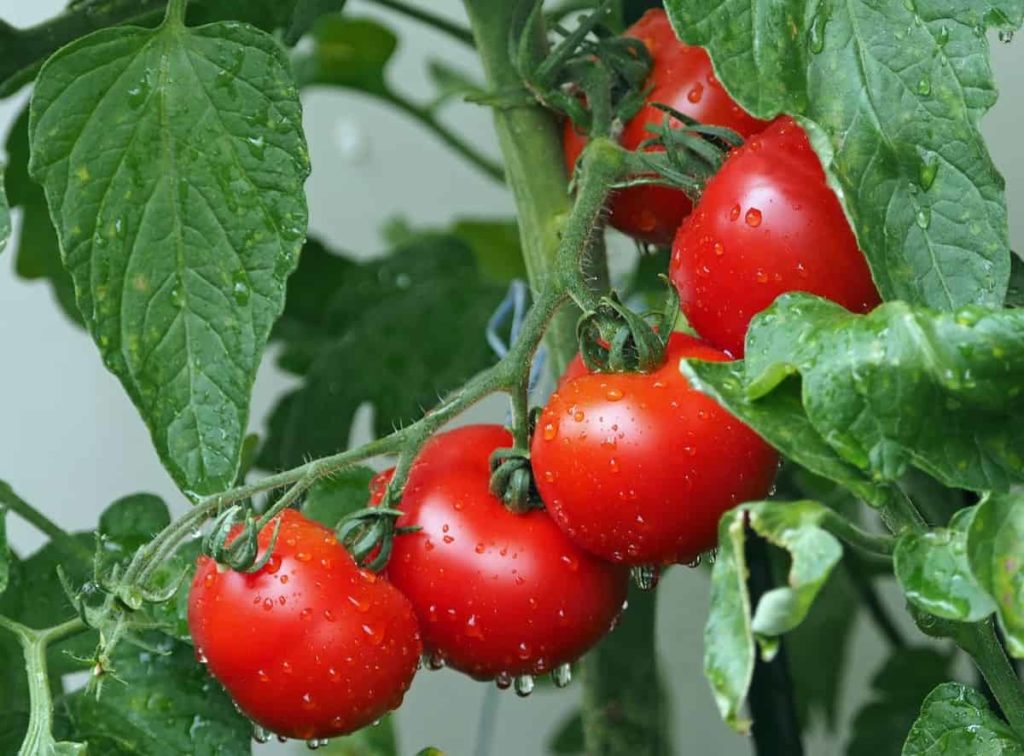
23 Vegetables to Plant in the Rainy Season in India
Tomatoes
Garden vegetables come in various sizes, shapes, and colors. Yes, cherry tomatoes can be grown in the monsoons as well. Start by sprinkling a few cups of vermicompost and red soil over the seeds. Sprouts will appear in a few days if you leave them in a shady area. Please make sure the soil is moist at all times and once they grow, stake them with wooden sticks to prevent them from bending with the weight of the fruit as they grow.
Cucumber
A suitable soil and sufficient moisture and sunlight make cucumbers relatively easy to grow. If possible, place them in a spot with maximum sunlight. Cucumbers can even be grown in grow bags with fertile and moist soil to give you a good harvest.
Okra
Bhindi is a common vegetable in most parts of the world. The homes of Indian homemakers. It grows well in their gardens during the monsoon—bags for growing. Plants with rapid growth produce several large flowers at once. It reaches a height of six feet. There are several varieties. Plants with burgundy leaves make excellent garden borders.
Button Mushrooms
The inclusion of button mushrooms in the healthy vegetables to eat during the monsoon season has caused controversy. Even though they grow in damp soil, many people believe they contain harmful microbes, but some experts disagree and say eliminating mushrooms from the diet would be wrong. Mushrooms are high in antibacterial properties and enhance the immune system. In addition, their bioactive compounds contribute to human health. When properly washed and cooked, button mushrooms are delicious when eaten during the monsoon.
Carrots
Root crops such as carrots can be grown throughout the year in various soil types. It is best to have deep, loose, humus-rich soil. You can grow carrots all year round by sowing seeds regularly. Earthing up should be done 60-70 days after sowing, however, to prevent the loss of color of the tops. If you have a small yard, you can choose from so many varieties that you can plant them in a bed, a container, or a window box based on their size.
Cauliflower
Another easy-to-grow vegetable is cauliflower. You can choose from three varieties during the monsoon season: early, primary, or late-season. Early and primary varieties are most prevalent during the spring and summer. Plants are sown between May and August and September and October and are ideal for rainy. For the late flowering plants, moist soil is better. Rainy season cultivation is best performed on rapidly drying soils, especially in the summer. Cauliflowers are usually harvested 90-120 days after planting.
In case if you miss this: Organic Backyard Vegetable Gardening
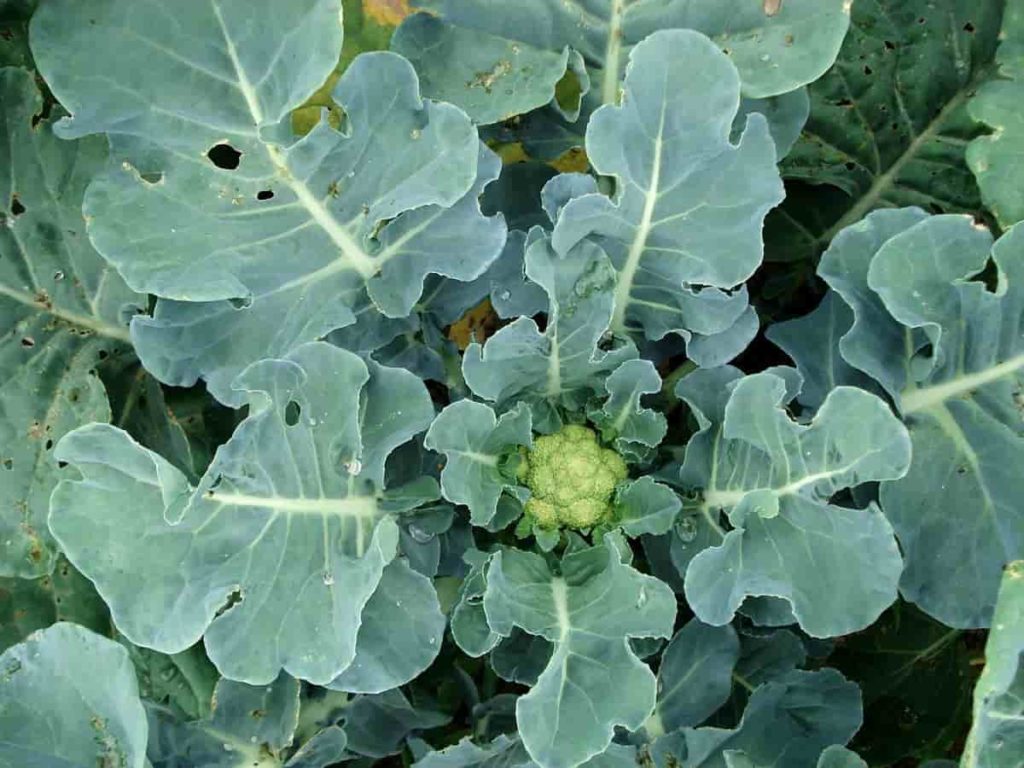
Radish
The best place to plant radishes is in the sun. Plant it in too much shade, and it produces larger leaves. It is best to have organic matter-rich soil that is not compacted. Use aged compost. In soil without organic matter, apply compost or an all-purpose fertilizer. Radishes grow from seed to small plant in only three days, and they can be harvested after three weeks. So before harvesting the others, it’s better to pull one out first. Throughout India, radish is famous for the dishes it is used to make. Moli Ke Parathe is a popular dish. It is an easy-to-grow vegetable that comes in several shapes and sizes.
Beans
Home gardeners prefer beans to other crops. Various plant sizes and ease of growth make them ideal for gardens. Additionally, they thrive in cold climates, making them viable to grow in the monsoon. They start flowering from November to December and are ready for harvest from January to February. Although they grow in various soils, they prefer loamy and clay loam soils.
Beetroot
Beetroot is an easy vegetable to grow, even for beginners. Ideally, grow beetroot in a large pot with a drainage hole and organic soil. Make sure the pot gets plenty of sunlight. As it gets rainwater anyway, it doesn’t need to be watered more than once every few days. It’s important not to overwater the plant or damage it. Generally, beetroot seedlings emerge after 15 days and are ready for harvest after two months. These are when the seedlings are tender and grow as large as golf balls.
In case if you miss this: How to Grow Vegetable at Home – A Beginners Guide
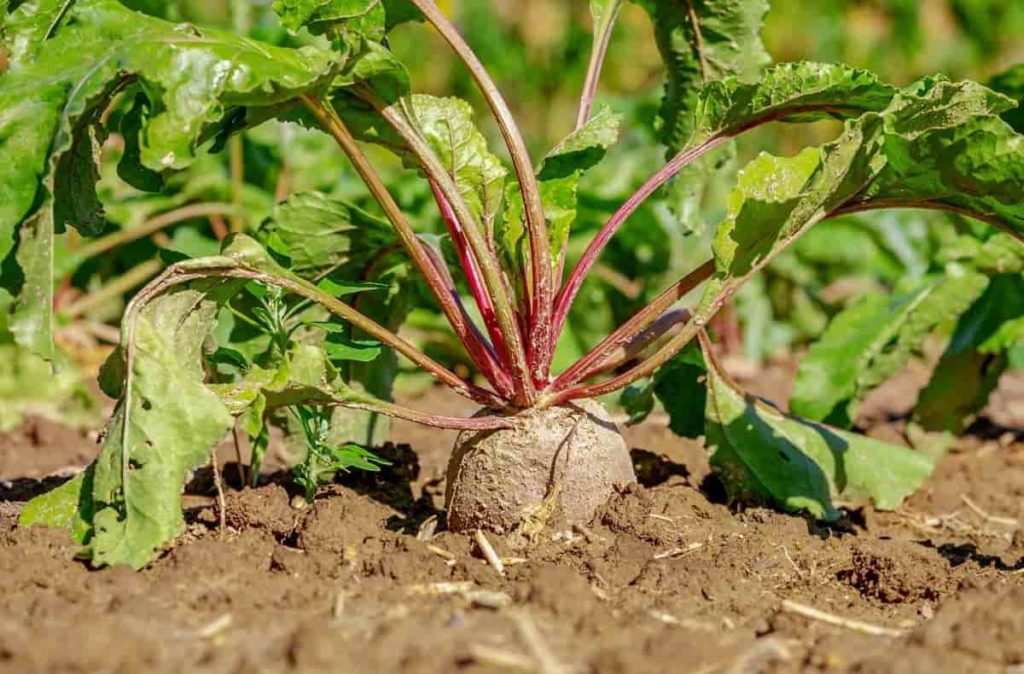
Eggplant
Indian dishes made by Baingan, born in South India, are essential to Indian cuisine. Baingan is one of the main ingredients of Baingan ka bharta and Vainkaiyya sambhar. Rainy seasons are ideal for growing this vegetable in the country.
Tinda
Despite its unpopularity with children, Tinda is an easy-to-grow vegetable with excellent health benefits. It grows best in tropical and subtropical climates in India, regarded as an annual.
Ivy Gourd
Green ivy gourds are also called perennial cucumbers or little gourds, and when they’re ripe, they turn vivid red. It prevents multiple ailments, especially seasonal-related disorders such as allergies, colds, coughs, fevers, and infections. Additionally, ivy gourd is beneficial for managing blood sugar levels and high cholesterol.
Spiny Gourd or Teasel Gourd
A teasel gourd is a yellow-green vegetable with a soft spine and a bitter taste. Teasels are popular rainy-season vegetables. Teasel gourd is perceived in Ayurveda as hepatoprotective, anti-inflammatory, laxative, and antipyretic. Moreover, it helps reduce fever, liver damage, and inflammatory illnesses (colds, coughs).
Elephant Foot Yam
A variety of nutritional and functional benefits are associated with elephant foot yam. During monsoon season, this tuber’s gastrokinetic effect corrects common gastrointestinal disturbances. Additionally, phenolic compounds and flavonoids improve immunity so that our body can fight any infections that may occur during the monsoon season.
Sweet Potato
The best time to plant sweet potatoes in India is the onset of the rainy season. It is easy to grow them, and they are also trendy throughout the country. Furthermore, they sell for a reasonable price, making the cultivation of Shakarkand commercially viable.
In case if you miss this:
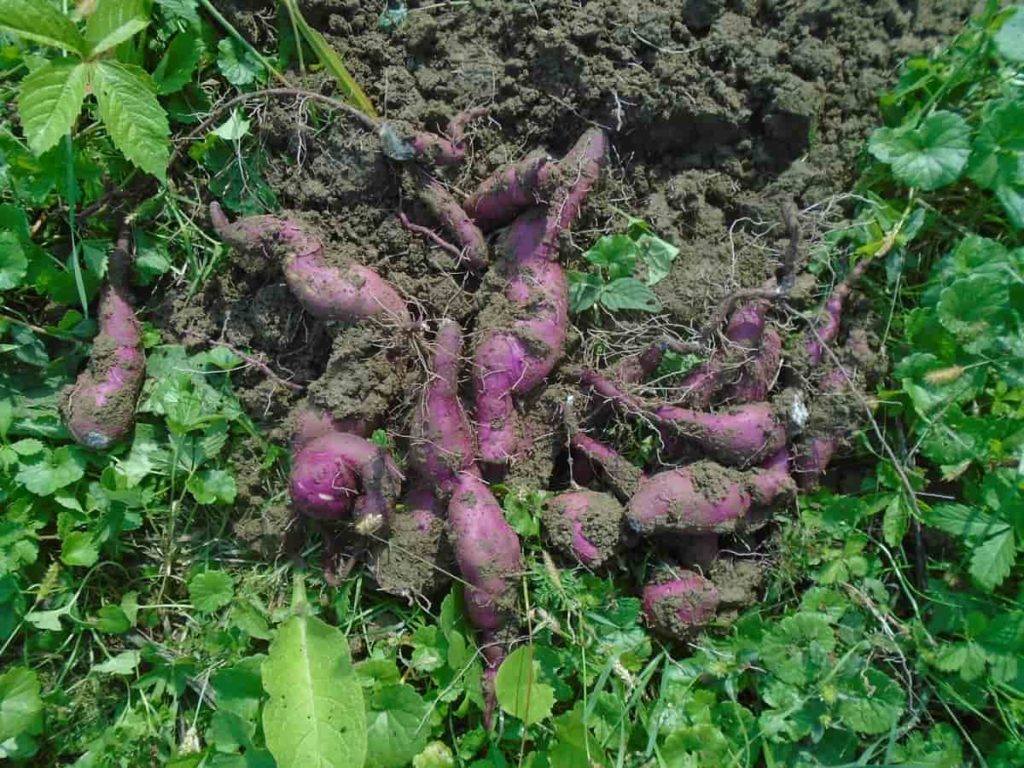
Spinach
The best time to grow palak is in the rainy season, one of the most popular and nutritious vegetables. The only thing you need to do is make sure the soil doesn’t become soggy since that can harm the growth of your plants.
Green Chilies
During the monsoon season, green chilies are at their best. These spicy chilies are not found in any Indian dish since we love them so much. With these more accessible gardening tips, you can grow chilies at home. Hot and humid weather is ideal for growing them. It’s best to plant chilies in a sunny spot with partial shade.
Plant green chilies in containers instead of in the ground since it is easier. Make some drainage holes in a three to four-inch deep container. Plant the seeds one inch deep. Ensure the chili container gets at least 5-6 hours of sunlight and water, and care for the plants daily. When your green chilies have been sown for almost 50-60 days, harvest them.
Bitter Gourd (Karela)
In the rainy season, bitter gourd, also called bitter melon, is one of the healthiest vegetables. This vegetable has antihelmintic properties and is effective against a group of parasites or worms found in the gastrointestinal tract. During the rainy season, parasites in the gastrointestinal tract are more common, so vegetables help kill them and aid digestion.
Amaranth
In addition to being rich in vitamins and minerals like iron, carotenoids, calcium, and antioxidants, amaranth is also high in protein. They grow both in wet and dry conditions, and they are perfect for planting in the tropics. However, you will need to ensure your irrigation system works during the dry season since leaves often transpire.
Sem Phali
You can grow Sem Phali for its seeds or beans as well. Locate your vegetable garden in a location with full sun or partial shade. Loamy, sandy soil with good drainage is best for growing them.
Peppers
Pepper seeds are easily purchased online, and you can grow them indoors for eight to twelve weeks before transplanting them outside. Keeping them warm in a sunny place and keeping the soil moist but not too wet is the best way to grow them.
In case if you miss this: Top 50 Vegetables To Grow In The Backyard

Bottle Gourd (Lauki)
As a traditional remedy for monsoon-related problems in India, bottle gourds are long melon, Lauki, dudhi, or Ghias. Besides being low in fat, it is rich in phosphorus, magnesium, and potassium. In addition, the veggie pulp relaxes the stomach, and its antibilious properties help eliminate excess bile. Bottle gourds are also helpful in treating fevers, coughs, and other respiratory illnesses during the rainy season.
Pointed Gourd (Parwal)
The pointed gourd, also known as patrol, Potala, or Palwal, has many therapeutic properties. As an antipyretic, it reduces fevers and colds every day during the monsoon season. During the rainy season, people tend to consume outside foods, which increases the risk of liver damage or inflammation. Pointed gourds possess hepatoprotective and anti-inflammatory properties that help protect the liver from inflammation and other problems. Furthermore, its antimicrobial properties help to prevent infections from various pathogens.
Tips for Vegetables to plant in the rainy season in India
Waterlogging, which limits plant growth during the rainy season, is common. In severe cases, roots don’t have enough oxygen to respire and eventually die. Make sure your garden has good drainage before the monsoon season begins. Grow bags, cocopeat, or another potting mix that is not water-retaining can provide good drainage.
The strong winds during the monsoon often cause plants to break or fall off. Be sure to provide support for your plants during these times. First, monsoon showers promote plant growth by pruning and mulching. Before the first showers arrive, prune, trim, and remove dead branches to help the plant grow in the right direction. In addition, mulching the garden before the monsoon will help retain nutrients in the soil.
Earthworms are farmers’ best friends, which is well known. Improve soil fertility, texture, and aeration with their help during the monsoon. The monsoon season is the best time to weed your garden. Unfortunately, weeds also thrive during this time. The weeds will not absorb nutrients from the soil if weeded before the monsoon arrives. It is also easier to remove weeds when they are young. To protect your garden, you should weed regularly during the monsoon season.
Rainwater harvesting is fun and beautiful if you have the space and time. Harvesting rainwater is not complicated. Alternatively, you can collect the rainwater in a barrel and place it in your garden. Then, plant vegetables around a pond you can make on your terrace if you have enough space. Additionally, this will attract birds and increase biodiversity on your terrace.
Select appropriate crops. A plant needs hot weather, and a plant needs cool weather. Likewise, a plant needs moist soil. Plants that do well in monsoons are usually cucumbers and gourds, such as the ridge gourd and bottle gourd. Become an expert in gardening by preparing your vegetable calendar in advance. You’re also healthier by eating fruits and vegetables that are in season.
When there are storms or hailstorms, cover the plants: Sometimes, plants are damaged beyond repair. Take measures to protect them. During rainy seasons, soil erosion is joint. Rain washes away the top layer of fertile soil. Using pots or grow bags in your garden is more likely to prevent this from happening. Apply fertilizers such as neem extract, compost, cow dung, etc.
In case if you miss this: Urban Vegetable Gardening Ideas, Tips, Techniques
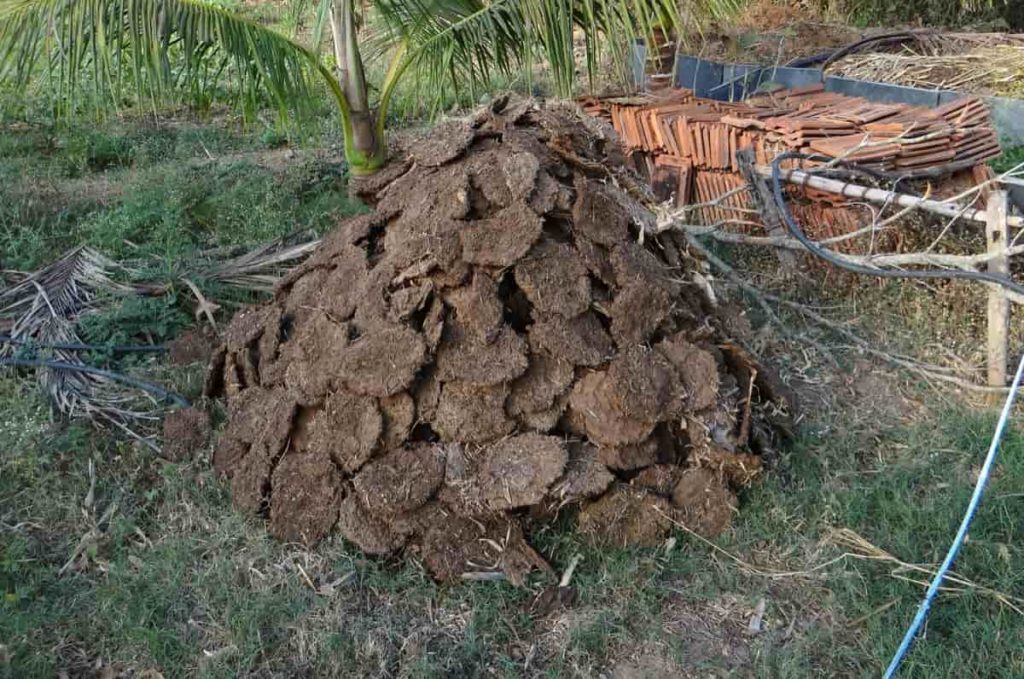
Commonly Asked Questions (FAQ) on Vegetables to Plant in the Rainy Season in India
Are Leafy Vegetables Available in India During the Rainy Season?
It is considered unhealthy for the body to consume leafy vegetables like cabbage, cauliflower, and spinach during the rainy season. Because of the dampness of the leaves, microbes are attracted to them and easily infect the green leafy vegetables, causing food poisoning when consumed.
During the Rainy Season in India, What Can You Do to Improve Vegetable Production?
Under these excellent growing conditions, lettuce, spinach, and Asian vegetables will thrive. However, for an endless supply of leafy greens, it’s best to plant a few seeds every other week or alternate between two or three types of seeds every week.
What Can We Do to Protect Vegetables In India from Heavy Rain?
Detection from wind and rain plants should be Plants by overturned pots, bowls, buckets, or other appropriately-sized containers—weigh down the coverings with rocks, cement blocks, or bricks to keep them in place.
Which Vegetables Are Good During the Rainy Season in India?
It is considered healthy to eat bitter gourd (karela), round melon (Tinda), pointed gourd (Parwal), ridge gourd (Turai), and yam during the monsoon season. In addition to boosting the immune system, they protect the body against numerous infections prevalent during the season.
Which Vegetables are Best Grown in India’s Rainy Season?
Indian households most commonly eat bhindi as a vegetable. Plant it in grow bags, and it will do well in the monsoon. Typically, the plants reach 2-6 feet tall and produce large flowers quickly.
- Gardening Techniques in Planting Vegetables
- Where to Place Indoor Plants in Your Home
- How to Grow Tomatoes Organically at Home: A Comprehensive Guide
- Organic Gardening on a Budget: Low-Cost Methods and Materials
- Gongura Seed Germination and Planting Methods
- Cabbage Seed Germination and Selection
- Broccoli Seed Germination and Selection
- Asparagus Seed Germination and Variety Selection
- Seasonal Flower Gardening: Best Practices for Spring, Summer, Fall, and Winter
- How to Grow Hibiscus from Flower
- Plantation Ideas for Home Decoration: A Beginners Guide
- Flower Garden Designs and Layouts for Beginners
- Planting and Spacing Techniques in Papaya: A Beginner’s Guide
- Growing Gold: Essential Techniques for Planting Pineapples
- How to Make Kalanchoe Plant Bushy: Home Remedies and Solutions
- 11 Reasons Why Your Gardenia is Not Blooming: Home Remedies and Solutions
- Eco Elegance: The Guide to Designing a Drought-Tolerant Landscape
- Gardening on a Slope: Strategies for Hillside Landscaping
- Nourish and Flourish: Top Organic Mulches for Thriving House Plants
- Everything You Want to Know about Indian Mogra Flower: Discover Uses and Growing
- Green Thumb Success: Expert Tips for Cultivating Greenhouse Pumpkins All Year Round
- Maximize Growth & Flavor: The Ultimate Guide to Companion Planting in Herb Gardens
- How to Control Rhododendron Problems Naturally: Home Remedies and Organic Ways to Fix Them
- Natural Magic: The Remarkable Benefits of Cinnamon for Plants
- Best Steps to Revive Dying Tulip with Natural and Organic Treatment
- 10 Reasons Why Your Angel Trumpet is Not Blooming: Remedies and Treatment
- How to Fix Periwinkle Leaf and Flower-Related Problems: Natural Remedies and Solutions
- How to Fix Zinnias Leaf and Flower Problems: Discover Natural and Home Remedies
- Organic Steps to Induce Lemon Tree Flowers: A Comprehensive Guide
- Bloom Booster: Crafting the Perfect Homemade Bougainvillea Fertilizer
- Optimizing Growth: A Guide to Applying NPK Fertilizer for Potted Plants
- 10 Best Homemade Fertilizers for Rubber Plant: DIY Recipes and Application Method
- How to Boost Female Pumpkin Flowers: Effective Steps for More Flowers and High Yields
- Transform Your Indoor Garden: Top Benefits of Pink Salt for Houseplants
- 10 Best Homemade Fertilizers for Peacock Plants (Calathea): Easy DIY Guide
- Unlock Blooms: 9 Reasons Why Your Potted Chrysanthemum is Not Blooming